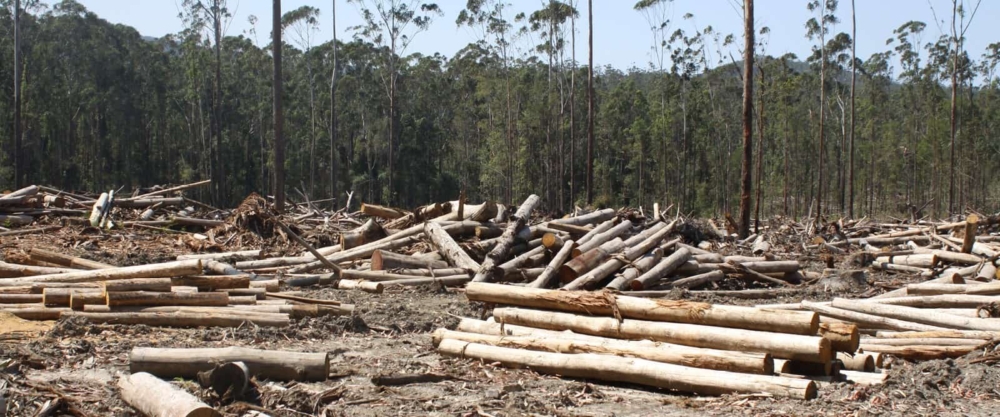20th Century Highwaymen?
Sources: Ken Dixon, Hearst Communications; Connecticut League of Conservation Voters; Connecticut Department of Transportation; https://greenblue.com/na/trees-as-sound-barriers/ : Washington Post, A Good Wall, Even if It’s Made of Plants, Can Reduce Highway Noise, Joel M. Lerner
In February an act to reel in what many think is indiscriminate cutting of trees along our highways was referred to the Joint Committee on Transportation
“AN ACT CONCERNING TREE REMOVAL AND VEGETATION MANAGEMENT BY THE DEPARTMENT OF TRANSPORTATION. To require the Department of Transportation to develop guidelines governing tree removal and vegetation management, to obtain approval from a certified arborist prior to any tree removal and to provide certain notices and disclosures regarding tree removal and vegetation management.”
Connecticut utility companies are clearing thousands of trees across Connecticut, which came to light during the Connecticut League of Conservation Voters Environmental Summit in January at the Connecticut Science Center in Hartford.
State Transportation Commissioner Garrett Eucalitto and his staff drew sharp criticism over the agency’s campaign of clear cutting trees along state highways and removing green screens from neighborhoods with no notice in the dead of night.
The criticism boiled over this week when veteran State Senator Tony Hwang,(R-Fairfield), charged that residents of his town were literally ambushed, with no public notice during a recent tree-clearing campaign along Interstate 95. Transportation officials told Hwang, a top Republican on the legislative Transportation Committee, that town officials had received prior notification of the work, but they promised to provide better direct communications with neighbors going forward.
Hwang took aim at Eucalitto during a public hearing this week on a variety of bills, including proposals to require the DOT to have licensed arborists sign off on any tree removals; and provide sound barriers for neighborhoods where the agency removes trees and vegetation. He complained that some of the work occurred at 2 a.m., and literally scared home owners and their families.
“Who’d you notify before you went and cut it?” Hwang said during a 20-minute back-and-forth with DOT officials Monday. “It seems to be, according to the residents I spoke with, a complete surprise. I had no idea and I would dare say that goes for my (legislative) colleagues. Where was the notification of the residents whose very homes and community would be changed?”
Eucalitto claims that “When we make the decision to remove trees it is for safety and it’s for the travelers because trees are falling, trees are diseased and dying in our state, but it’s also to protect people if they have to leave the roadway,” Eucalitto said of the programs clearing interstate and parkway right of ways. “You want to avoid fixed structures that can kill them when they leave the roadway, or cause serious harm and injury to them.”
The Department of Transportation claims that there is no evidence that shows trees actually reduce the sound for residents. Kimberly Lesay, Chief of Policy and Planning for the DOT, said that studies indicate that a 100-foot-wide swath of evergreens can reduce traffic sounds by no more than eight decibels. “Certainly vegetation can help but it’s certainly not a silver bullet,” Lesay said, adding that the department began a study last year for the major highways and where there are noise impacts that will result in a priority list.
According to Green Blue, Trees as Sound Barriers: Where solid barriers such as fences are frequently used as sound barriers, trees and shrubs can also be effective. Where space permits, thick strips of vegetation in conjunction with landforms or solid barriers can reduce highway noise by 6 to 15 decibels (D.I. Cook). Because trees absorb more high-frequency noise than low frequency, this makes them ideal for use as sound barriers. https://greenblue.com/na/trees-as-sound-barriers/
Published results on the effectiveness of trees as sound barriers vary enormously, however, a study by Huddurt in 1990 shows that in some instances noise can he reduced by 6 dB over a distance of 30 meters where planting is particularly dense. Leonard and Parr (1970) and Reethof (1973) found that a dense belt of trees and shrubs between 15-30 m wide could reduce sound levels by as much as 6-8 dB. Cook and Van Haverheke (1972) found reductions in noise level of 5-10dB for belts of trees between 15-30m wide. Research also suggests that wide plantings (around 30 meters) of tall dense trees combined with soft ground surfaces can reduce apparent loudness by at least 50%.
An article in the Washington Post claimed: A buffer of mixed plants can absorb and deflect sound waves. The mix of plants is important because different types of leaves reduce different types of noises. How much noise control they provide depends on the intensity, frequency and direction of the sound, and the location, height, width and density of the planting. Mixed broadleaf plantings at least 25 feet thick and conifers 50 to 100 feet thick can drop noise levels by up to 10 decibels. For year-round noise reduction, plant a mix of evergreens such as arborvitaes, spruces, pines and hollies. To be effective sound barriers, these trees must have foliage that reaches to the ground.
Deciduous plants are also effective for noise abatement, but only when foliage is present. Like evergreens, these must also have foliage from the ground up to really do the job. Thickets of sassafras and paw paw have been found to be relatively effective for this purpose.
Paul Rizzo, Bureau Chief for Highway Operations said that over the past five years, Connecticut trees have been ravaged by pests including the emerald ash borer, the spotted lanternfly, and the spongy moth. “Our program is to go out there, recognize these hazards and we try to eliminate them,” Rizzo said. “And while we do this we’re trying to create our 30-foot clear zone, which is a national standard for a straight road, a flat road, with a minimum of 6,000 cars a day at speeds of 60 miles per hour. Now we all recognize that our highways carry many more cars than 6,000 a day. The portion in Fairfield we are speaking about is about 34,000 cars a day and I’m sure the speeds are well above 60 mph.”
Rizzo claims that an arborist and environmental planner approved the tree cutting, which was done late at night to have less traffic impacts along the interstates and parkways. “We’re trying to clear those before they fall and close the road or land on a car,”. He said that prior to five years ago, “any” kind of wind or snow event would result in downed trees along the parkways, necessitating road closures.
Rizzo said the Fairfield public works director was notified in advance of the work and a news release was issued from the DOT warning of lane closures. Adam Boone a landscape designer for the DOT and a licensed arborist, said that since the Fairfield project, DOT personnel now issue notification cards to neighbors abutting highways where tree clearing is scheduled. “We have so many trees failures, so many trees falling directly on cars,” Boone said.
According to Hwang beyond informing the DPW director and a press release, DOT did not, in this case Fairfield, notify any of the residents. “Residents that live near parkways and highways understand what they’re buying into, but when they buy into it there is that buffer-kind of protection, To have it unilaterally changed and not be informed, and to say there is nothing that can be done about it and they have no control, is a usurpation of the social agreement in my mind that someone upended the deal and their lives are irreparably changed, from quality of life and quality of health.”
State Representative Roland Lemar, D-New Haven, co-chairman of the Transportation Committee, ended the discussion on trees by stressing the importance of a planned statewide landscape management and replanting plan. State Representative Joe Gresko (D) 121st Connecticut House in Stratford is a co-sponsor of the Act presented to the Joint Committee on Transportation.

